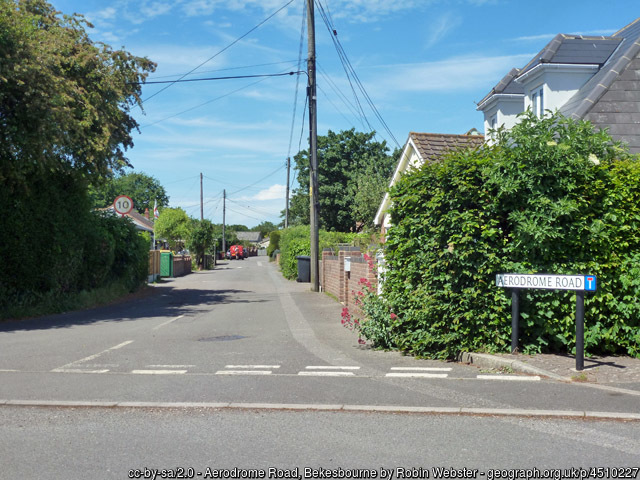Bekesbourne (Bridge) (Canterbury)
Did you know?
"No 2 Squadron and its Westland Lysanders discovered on arrival at Bekesbourne in May 1940 while trying to support the Dunkirk evacuation how the previous civil owners had left in such a hurry that 600 gallons of aviation fuel had been left behind in storage tanks.
"| Also known as: | Beakesbourne (misspelling) / Bekesbourne Aerodrome / RAF Bekesbourne / RFC Bekesbourne / Canterbury Aerodrome |
| County: | Kent |
| Current Status: | Farmland / Housing |
| Date: | 1914 (unconfirmed) - June 1940 |
| Current Use: | Disused |
| Used By: | RAF / RFC / Civil |
| Landing Surface Types: | Unpaved |
| Aircraft Roles: | Army aviation / Fighter (main role) / General aviation (main role) |
Bekesbourne, in Kent, was a major First World War fighter airfield. Originally opened in 1914, main occupant No 50 Squadron remained ready to defend London and south-east England against Zeppelin and later Gotha bombing raids. Between both World Wars it became a popular civil airfield and was home to the Kent Flying Club. Interestingly, Britain’s first private civil pilot E.D. Whitehead Reid, a Canterbury doctor, flew from here in the 1920s to attend to patients.
During May/June 1940 Bekesbourne was briefly revived as a military airfield for Westland Lysander Army co-operation aircraft to support the Dunkirk evacuation. A Great War General Service hangar disappeared in 1998 for new housing but a number of original buildings associated with the airfield still survive as private dwellings, including the Officers’ Mess and combined station chapel/NAAFI.
The following organisations are either based at, use and/or have at least potentially significant connections with the airfield (as at 01/09/2011):
- Bekesbourne with Patrixbourne Parish Council
- Bridge & District History Society
- Canterbury Library
Main unit(s) present:
- No 2 Sqn
- No 13 Sqn
- No 50 Sqn
- No 56 Sqn
- British Hospitals Air Pageant
- Kent Flying Club
- National Aviation Day Ltd
Photographs from the unveiling of the ABCT memorial marker on 23 February 2009:
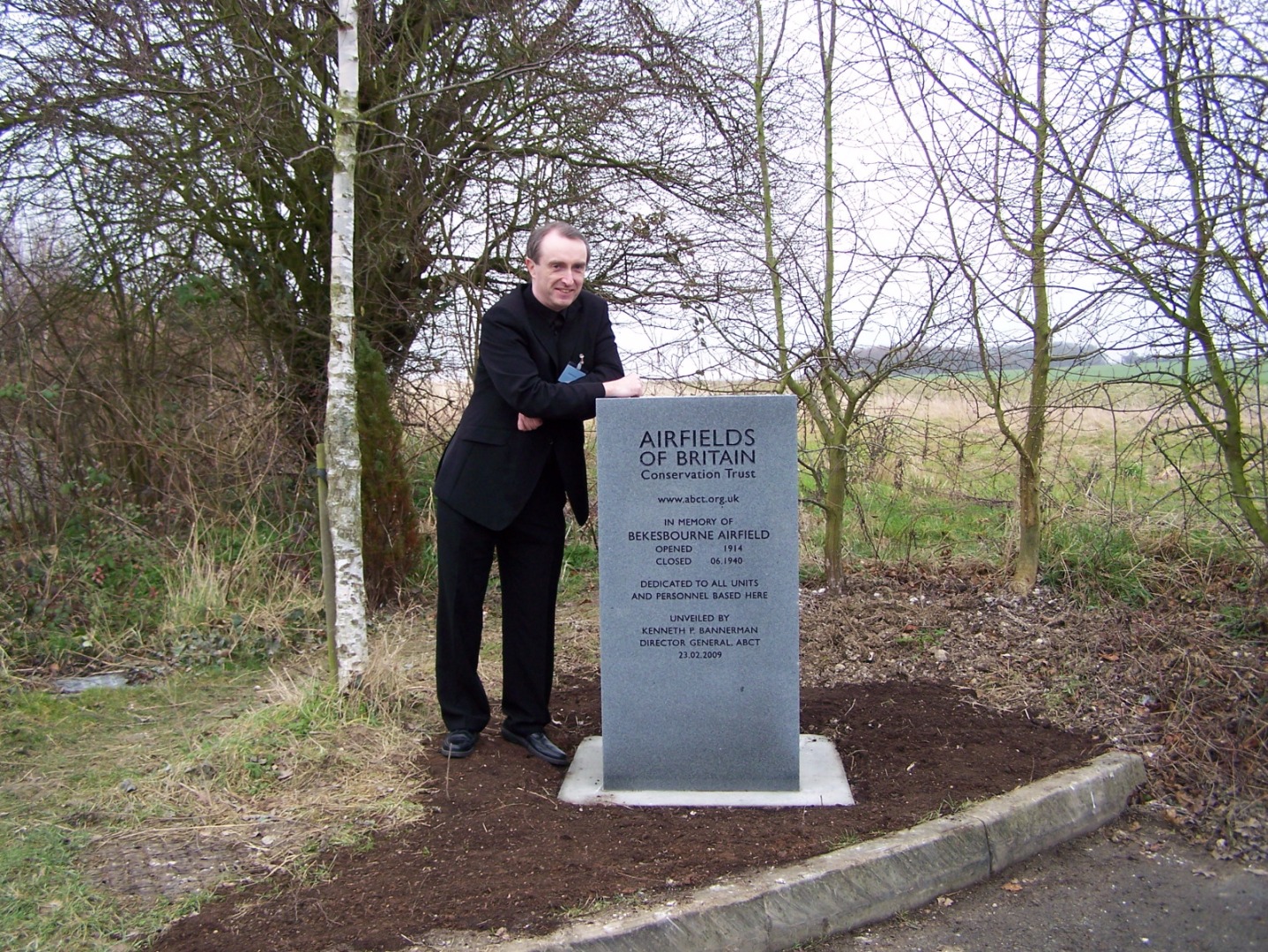
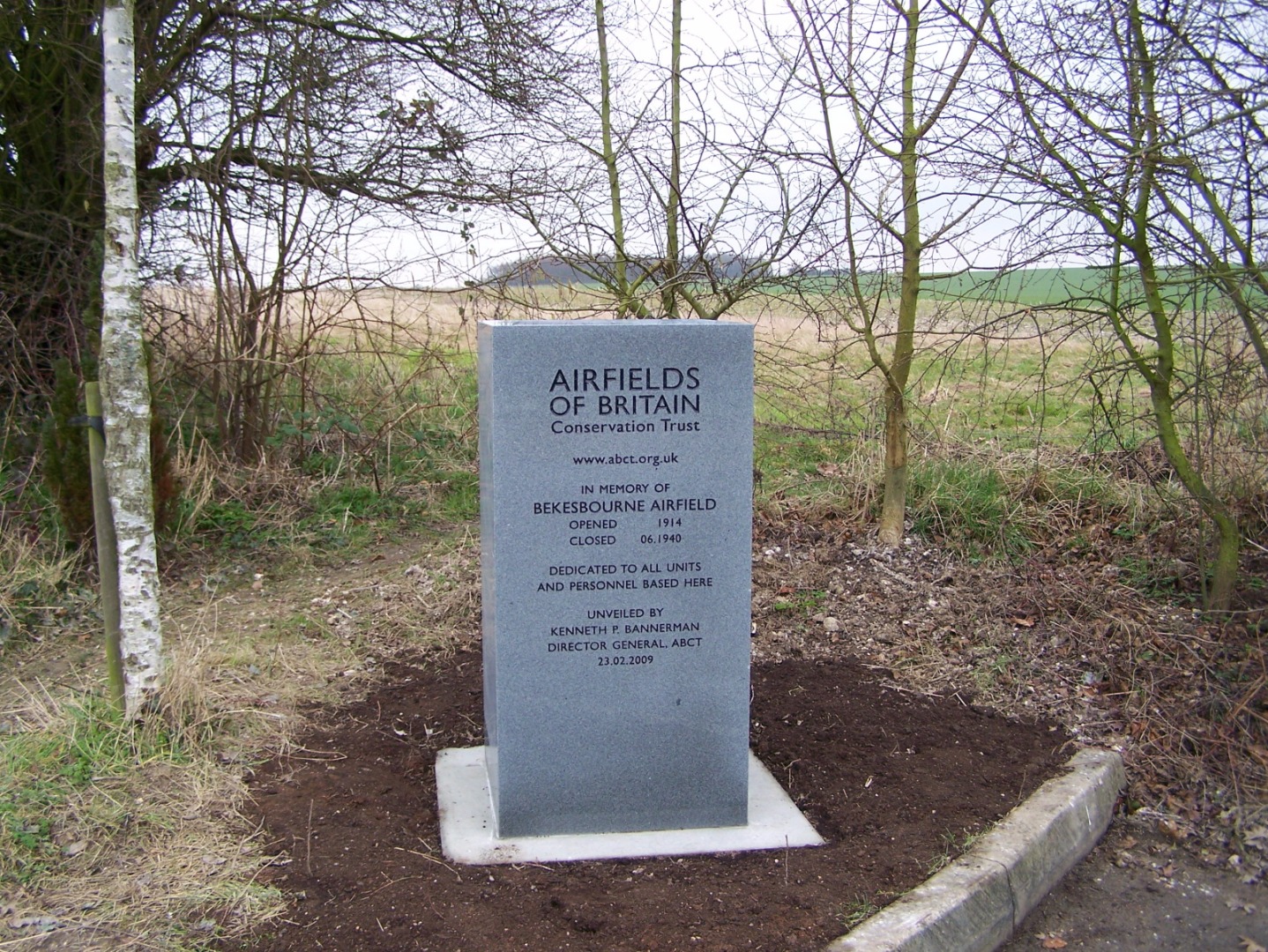
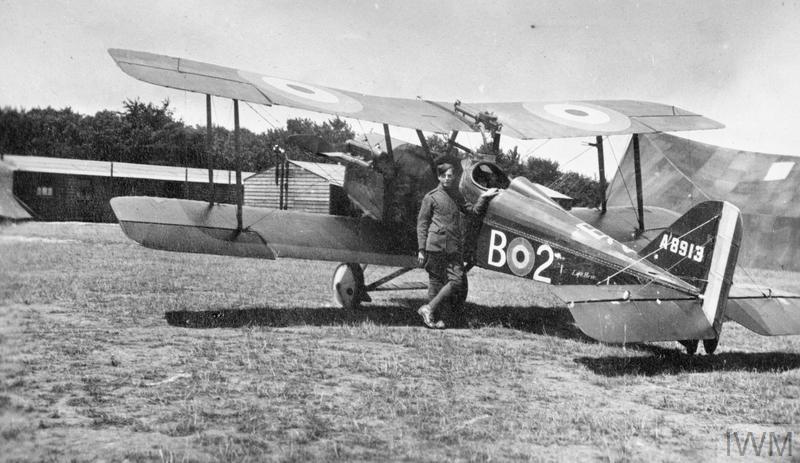
A rigger standing by Royal Aircraft Factory SE.5a, A8913 'B2' flown by Lieutenant K K Muspratt of No 56 Squadron, Royal Flying Corps. Possibly taken at Bekesbourne, late June 1917. © IWM (H(AM) 1112)
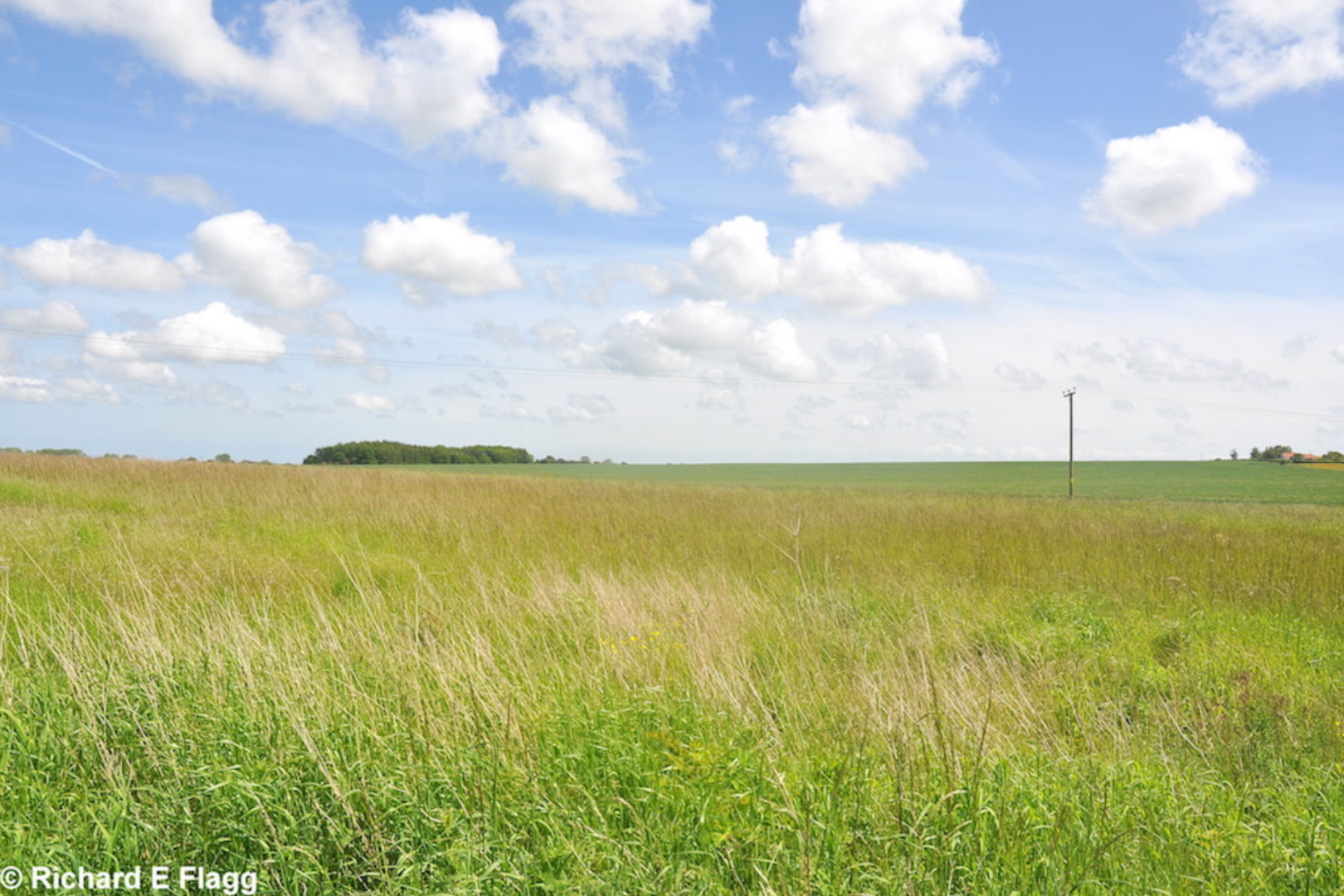
View across the former flying field, 25 May 2014. © Richard Flagg
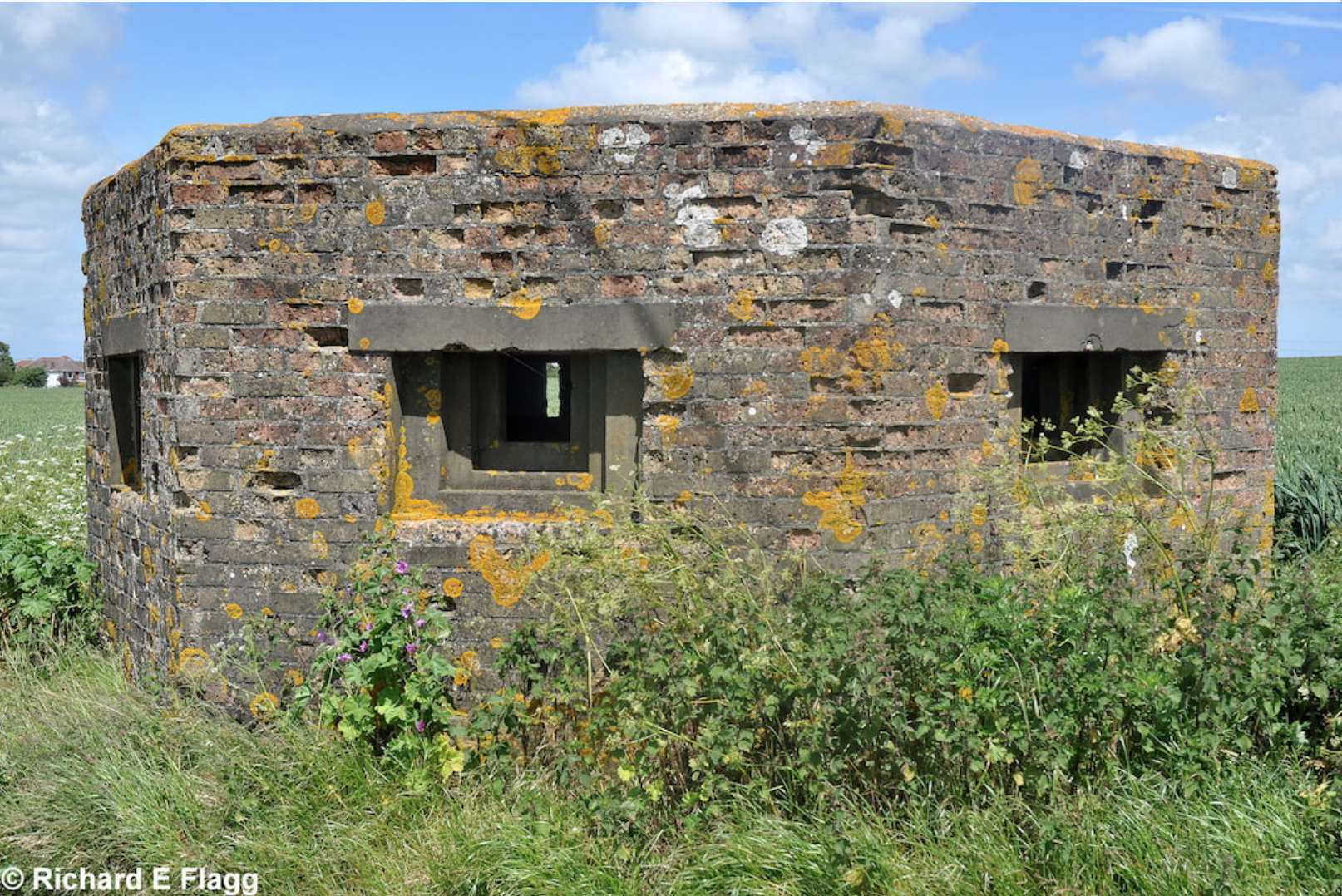
Type 24 Pillbox at Bekesbourne, 25 May 2014. © Richard Flagg
| Home Defence Flight Station(s): | |
| Home Defence Landing Ground(s): | Allhallows / Biggin Hill / Broad Salts / Broomfield, Kent / Frinsted / Guilton / Hunton / Leigh Green / Marden, Kent / Pett / Pluckley / Rye / Sole Street / South Ash / Swingfield / West Malling (Kings Hill) |
